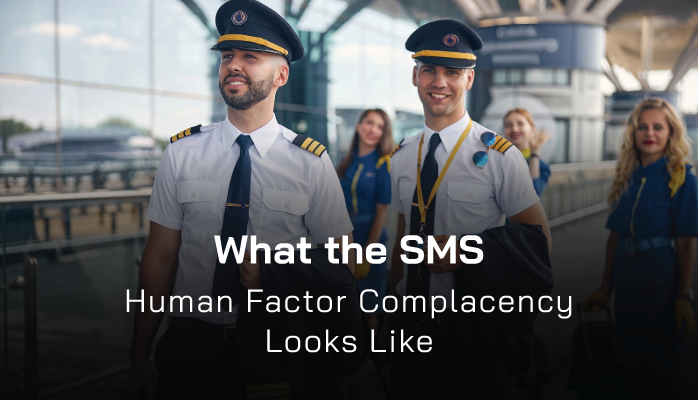What Is the Human Factor Complacency (Two Types of Complacency)

Human Factor Complacency is one of the most important Human Factors in aviation safety that you need to be aware of.
Complacency can happen when you are feeling satisfied with your level of safety, and it can happen when you are apathetic to your own safety level.
Complacency is the cause of countless safety incidents because of things like:
- You’ve done this task many times with no problem;
- You know how to do this task really well;
- You are sure of the dangers that this task poses; and
- You are sure that you are behaving safely.
Related Aviation Human Factors Articles
- Let’s Talk Human Factors - Origin of Dirty Dozen
- Let’s Talk Human Factors - Lack of Communication
- Let’s Talk Human Factors: Distraction Is #4 of the Dirty Dozen
The hallmark of complacency is an expectation of safety, which is what the above points result in. With this type of mindset, you are less likely to:
- Be aware of new danger;
- Double check your work; and
- Be vigilant and considerate about your current actions.
The opposite of complacency is vigilance and verification.
Great Story That Demonstrates Consequences of Complacency

At an air force base in Guam, a routine check of a 1.4 billion dollar Stealth Bomber discovered that humidity was causing the pressure sensors to malfunction. No problem, it was a simple fix. End of story. Safety was restored
Except, this maintenance team and safety managers did not communicate to other maintenance crews to fix the sensor as well.
The result? Another maintenance crew overlooked the wet sensor, and the wet sensor didn’t send important data – the kind that keeps the bombers flying – to the flight control system. As you would expect, the bomber crashed.
Complacency caused the accident to the tune of 1.4 billion dollars– complacency in not communicating a simple fix, and complacency in (presumably) not noticing the wet sensor.
Common Behaviors That Demonstrate Complacency
One of the reasons complacency can be such a problem is that when you are feeling complacent or behaving complacently, you are rarely aware of it. Some common complacent behaviors while performing routine tasks are:
- Thinking about other things, like you are on autopilot;
- Not verifying your work;
- No feeling of “stress” about your task;
- Signing off on work you haven’t ensured is complete; and
- Working exclusively from memory, as opposed to actively paying attention.
Complacent behavior is most common when performing everyday, boring, routine tasks, that, frankly, most people don’t really want to do. It is no surprise that these tasks are associated with way more safety issues than they need to be.
It is during such routine tasks that you should make the greatest attempt at vigilance. Tiny mistakes can have significant consequences.
Causes of Complacency in Aviation Safety
Causes of Complacency in aviation safety are fairly straightforward:
- Feeling that things are safe;
- Feeling confident that you know you performed the task safely, without double checking;
- Feeling sure that nothing could go wrong in such an ordinary procedure; and
- Feeling that something very trivial could not cause any harm.
Complacency is a feeling/mindset that leads to undesirable behavior and increased workplace accidents.
Have You Read
- The 13th Aviation SMS Human Factor -- Adopting Risk Attitude
- Advanced Topics for Human Factors Aviation SMS Training
- 3 Most Important Human Factors in Aviation SMS Programs – They’ll Surprise You
How to Overcome Complacency
One anonymous person put it succinctly when they said, “Assume that everyone else doesn’t know what they’re doing, including yourself.”
This is a good attitude to have because:
The first precursor to danger is your assumption that you or anyone else won’t make mistakes.
In many ways, becoming really good at the operational side of your job can make you more prone to catastrophic errors, especially when you have seen success the past hundred times you have performed a task.
Past successes are not future guarantees. Trust that you know what you are doing. Trust that you can and will make mistakes. Trust that if you earnestly double-check your work, you will find oversights.
Please feel free to download a Word document transcript of this article and use it in your safety newsletters. This article was written with the intent that aviation service providers would use all or some of this material as a safety promotional tool.
Last updated April 2025.





